Water Sensitive Urban Design
Course subject(s)
4 Climate Change
A SHORT INTRODUCTION TO WATER SENSITIVE URBAN DESIGN – MANAGING PLUVIAL FLOODS IN CITIES
As you know high-intensity rainfall can cause pluvial flooding in cities (see video 4.3.3 on Pluvial Flooding by Claudia Brauer). To reduce the impact of these heavy rain events, traditional approaches to rainwater management have involved channeling rainwater away from urban areas by means of sewers, drainage ditches or even using roads to convey the water. However, with climate change, pluvial flooding events will be more frequent. To address this, relatively new approaches have developed. These are the urban design and water management approaches that are called Water Sensitive Urban Design (WSUD) and Sustainable Drainage Systems (SuDS). These approaches have a number of key features that distinguish them from more traditional approaches to urban water management :
- Storing rainfall as close as possible to where it falls and releasing it slowly (attenuation) vs. removing it as quickly as possible;
- Allowing water to soak into the ground (infiltration) vs. transporting water over sealed surfaces into surface water bodies;
- Slowly transporting (conveying) the runoff vs. letting water flow quickly into sewer and drainage systems.
In addition, WSUD and SuDS seek to exploit some additional benefits that include:
- Filtering out pollutants;
- Allowing sediments to settle by controlling the flow velocity of the water;
- Greening the city and,
- Mitigating the Urban Heat Island effect by providing more vegetation that cools the urban environment through evapotranspiration.
When comparing WSUD and SuDS, it must be pointed out that the WSUD represents a much wider framework than what is covered here. The WSUD framework sees the city and its catchment and focuses on the management of the whole urban water cycle, including drinking water and wastewater. Furthermore, it is a more holistic framework as it integrates aspects from different areas of expertise including water management, urban design, landscape planning as well as ecology and social aspects.
Both SuDS and WSUD make use of green (vegetation) and blue (water bodies) infrastructures to manage excessive rainfall. SuDS and WSUD do not comprise a single infrastructure but many infrastructures that are combined to form a “management train” that ensures appropriate management of urban water, prevents flooding and treats runoff/storm water. A selection of possible infrastructures is presented in the following sections. For a further reading, we recommend two manuals for urban drainage and WSUD as applied in Melbourne and Singapore.
Vegetated Swales
Vegetated swales can be used instead of pipes to transport runoff water and provide a ‘buffer’ between the area receiving water and areas allocated for infiltration. The vegetation in the swale also serves as the first treatment step to encourage settling of pollutants and uptake of nutrients by plants. In addition, swales can also have amenity value and provide habitats for wildlife.
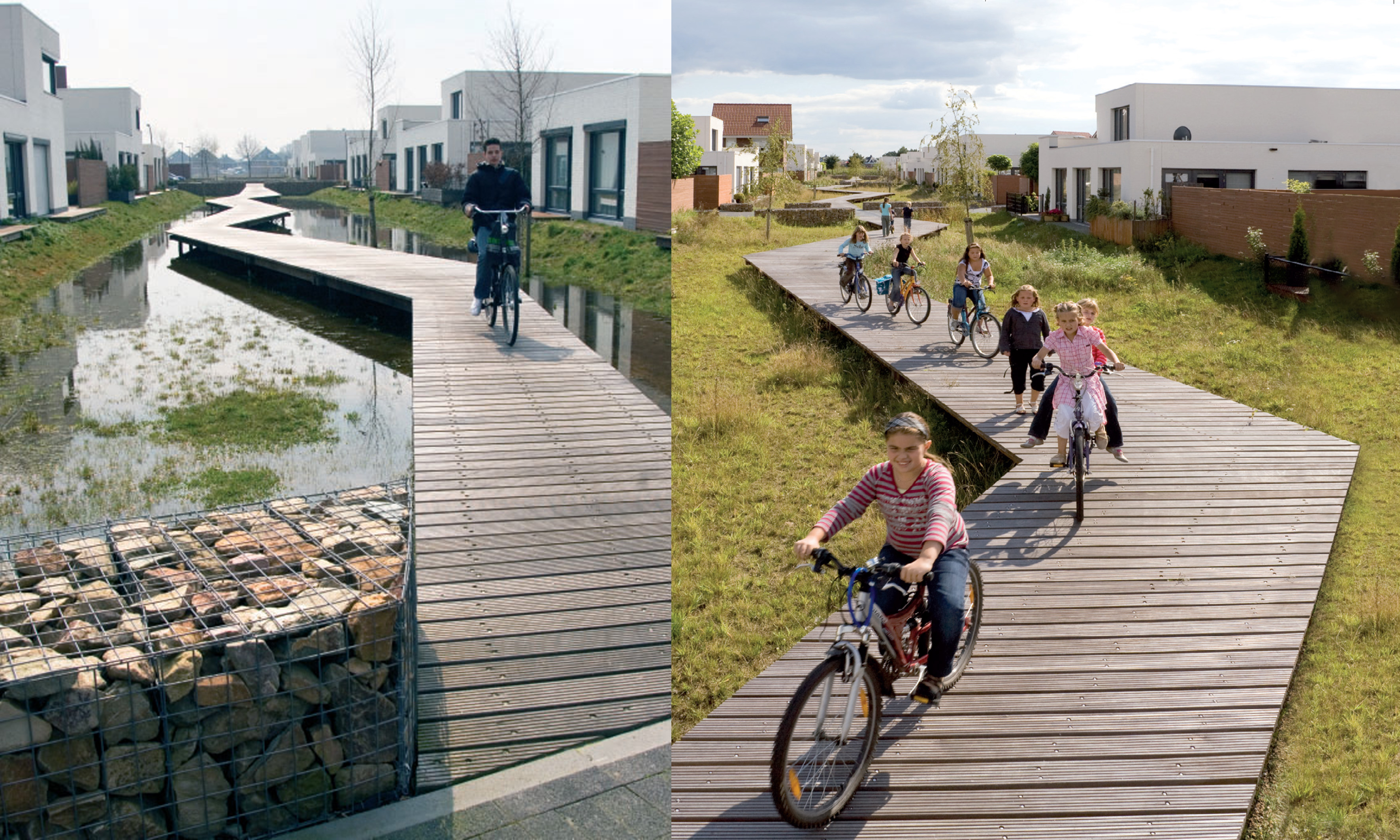
Infiltration Trenches
Infiltration trenches are shallow excavated trenches filled with gravel or crushed stone that are designed to filtrate storm water though permeable soils into the groundwater aquifer. This is often used to treat runoff water from impervious surfaces, such as sidewalks and parking lots, on sites where there is limited space available for managing storm water.
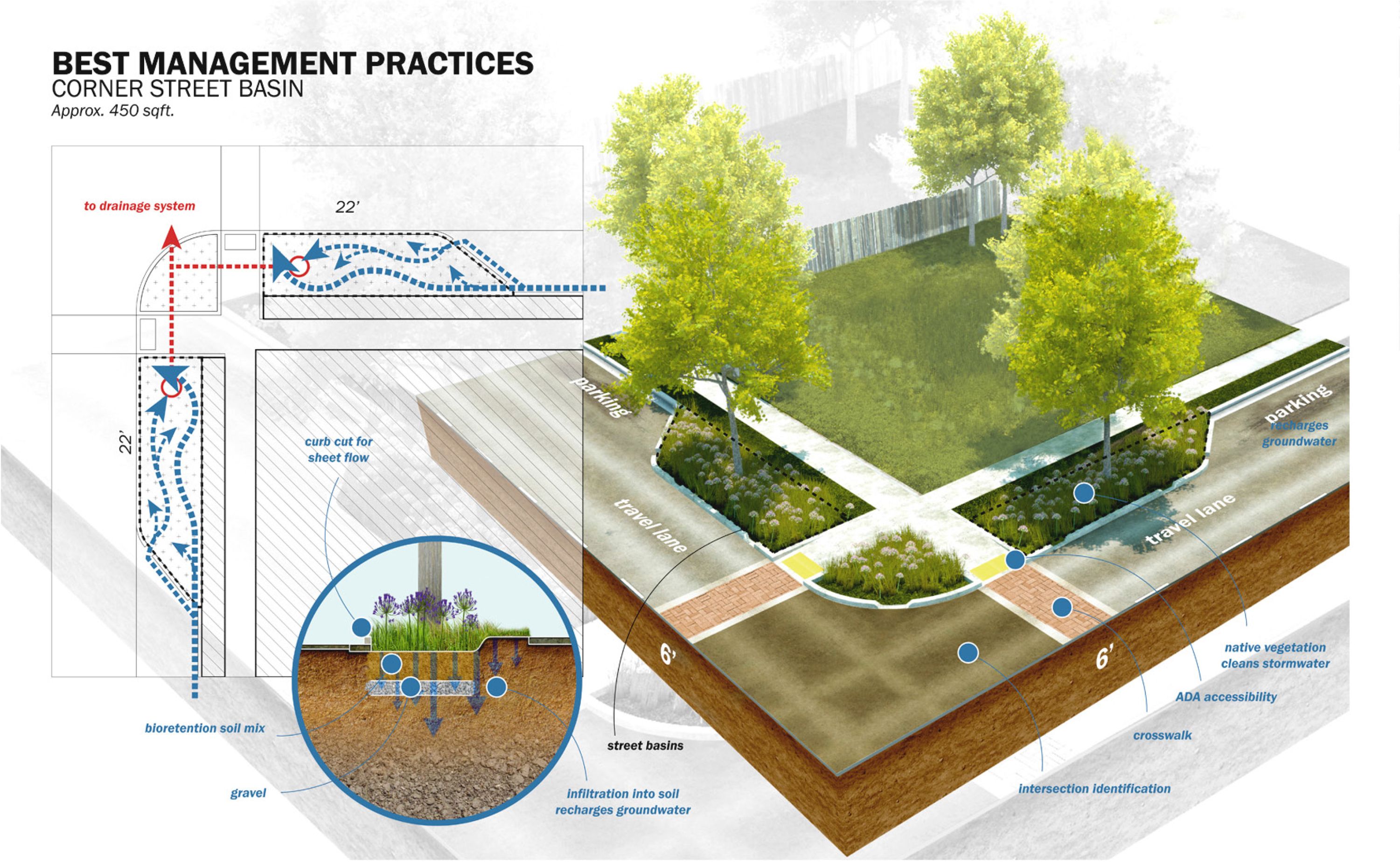
Retention and Detention Basin
Retention basins are pond-like features with vegetation around their perimeters. They have a permanent pool of water and the water level is allowed to vary as a results of rain events. Water is released slowly from the retention basin into another body of water on the surface or partially infiltrates into groundwater. Contrary to retention basins, detention basins are not permanently wet, they are sometimes called “dry ponds”. Both detention and retention ponds delay runoff and contribute to the treatment of storm water through different passive treatment processes such as filtration, sedimentation, absorption and biological processes.
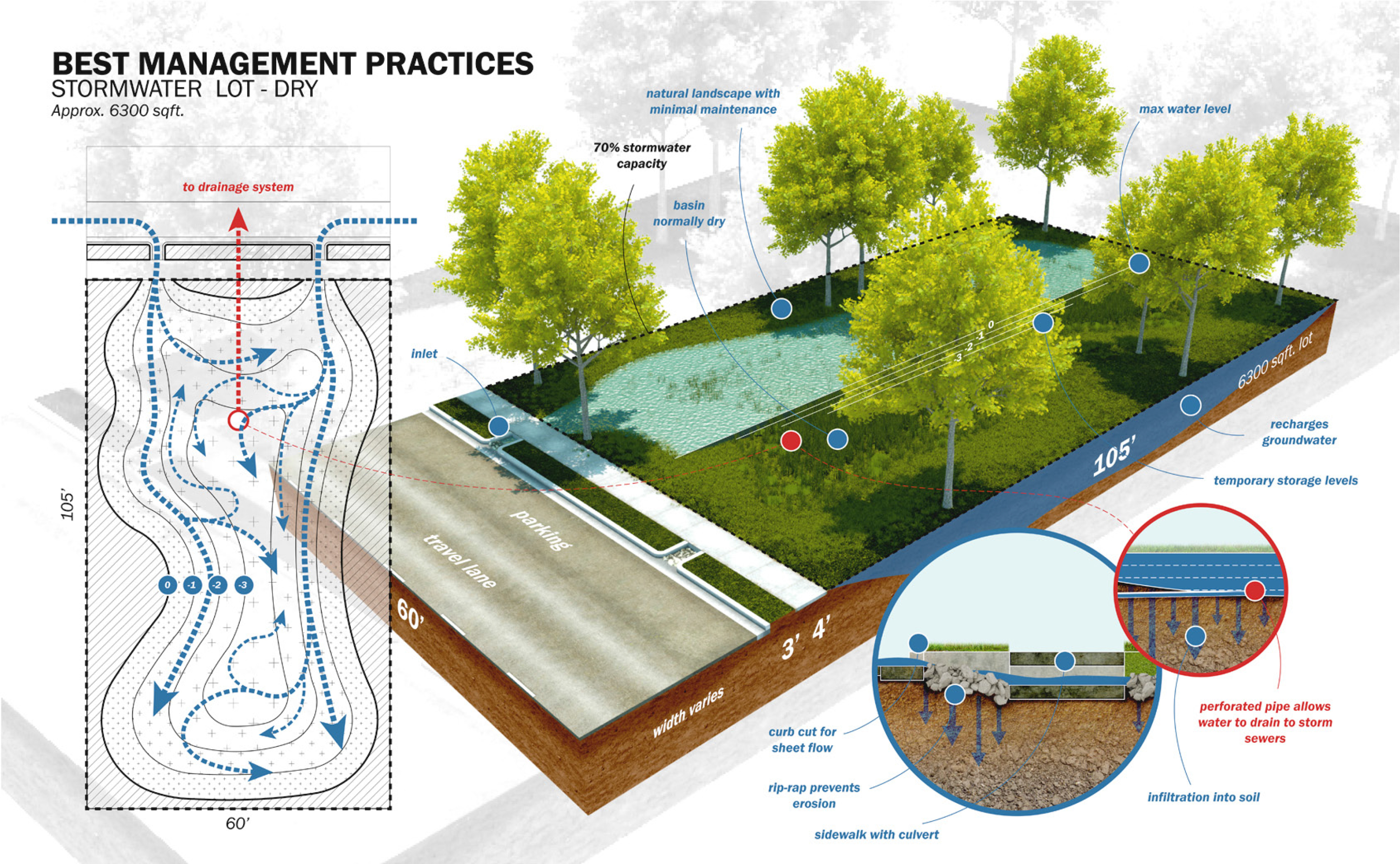
Raingardens
In raingardens, stormwater runoff is filtered through a vegetated sand media layer. It is then collected through perforated pipes so it can flow to downstream waterways or into other features such as retention or detention ponds. The vegetation that grows in the filter media enhances its function by:
- Preventing erosion of the filter medium;
- Taking up nutrients and water;
- Continuously breaking up the media through root growth to prevent clogging of the system;
- Providing biofilms on plant roots into which pollutants can adsorb.
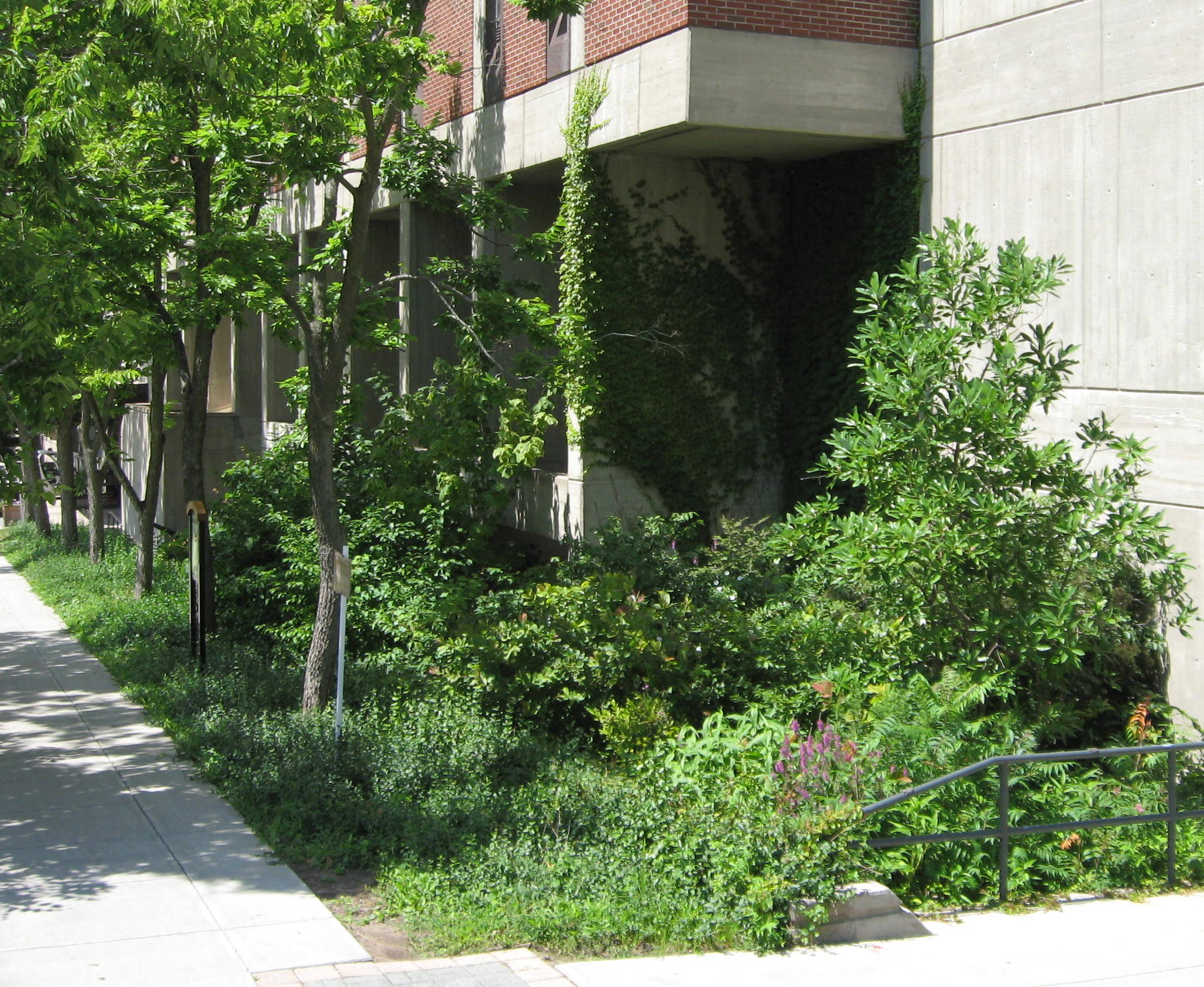
Constructed Wetlands
Constructed wetlands are man-made vegetated structures that are partially saturated with water, either permanently or temporally. They mimic the treatment processes that are taking place in natural wetlands. Constructed wetlands can be similar to a pond, where water flows horizontally over the soil, or comparable to a raingarden. In the latter, the water will infiltrate into a coarse medium, such as sand, that is planted with macrophytes. These can be reeds (e.g. Phragmites australis or Typha latifolia) or ornamentals (e.g. Canna andHeliconia) that are sometimes used depending on local conditions. The water is treated through physical (sedimentation, filtration), biological (microbial activity and uptake by plants) and chemical (adsorption, UV degradation) processes. The roots of the macrophytes ensure that the filter medium will not get clogged. Wetlands can also provide habitat for wildlife and a focus for recreation, such as walking paths and resting areas.
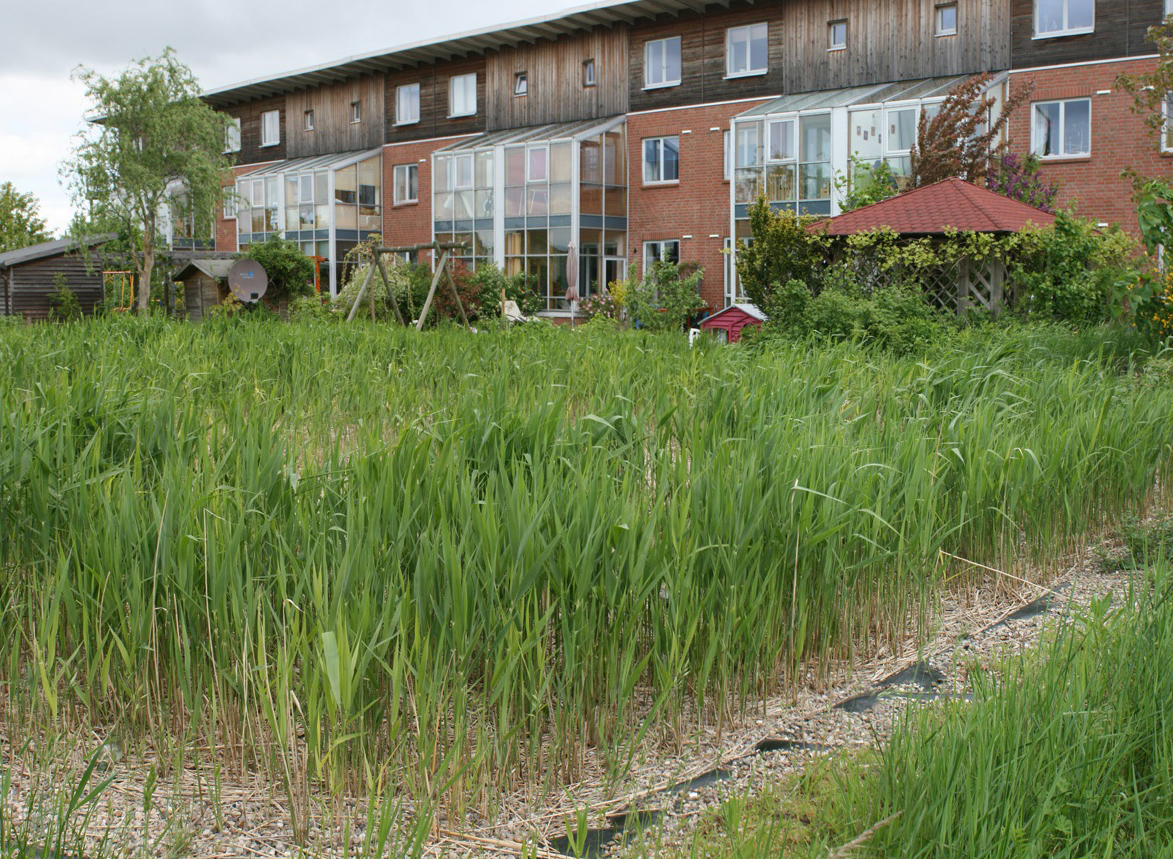
I am text block. Click edit button to change this text. Lorem ipsum dolor sit amet, consectetur adipiscing elit. Ut elit tellus, luctus nec ullamcorper mattis, pulvinar dapibus leo.
Bibliography
City of Melbourne and Melbourne Water (2004). Applying the Model WSUD. An initiative of the Inner Melbourne Action Plan. Accessed 11/02/2016: https://www.melbourne.vic.gov.au/SiteCollectionDocuments/wusud-guidelines-part1.pdf
Perlocation trench. Accessed 11/02/2016: https://en.wikipedia.org/wiki/Percolation_trench
Environmental Protection Agency (2004). Constructed Treatment Wetlands. Accessed 11/02/2016: http://nepis.epa.gov/Exe/ZyPDF.cgi/30005UPS.PDF?Dockey=30005UPS.PDF
Waggonner & Ball (2013) Living with water a vision for delta cities. Accessed 15/02/2016 http://livingwithwater.com/

Sustainable Urban Development by TU Delft OpenCourseWare is licensed under a Creative Commons Attribution-NonCommercial-ShareAlike 4.0 International License.
Based on a work at https://ocw.tudelft.nl/courses/sustainable-urban-development/.



